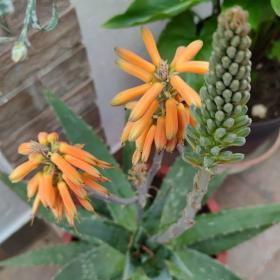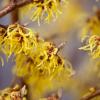Aloe Vera is in flower during the greater part of the year. It is a succulent plant, without a stem, the leaves being radical, spinney, and toothed. There is a variety of variegated foliage. The flower stalk rises to many feet in height, bearing a number of large and handsome flowers. In cold climates there is usually a very long interval between the times of its flowering, in a warm climate, it is found to flower much more frequently.
A bitter yellow latex contains anthraquinone barbaloin (a glucoside of aloe, emodin), iso-barbaloin, O-glycosides of barbaloin (called aloinosides, chrysophanic acid), glucosamine (a polysaccharide). It is also reported to contain steroids, organic acids, enzymes, antibiotic principles, amino acids, “ biogenic stimulators”, “wound-healing hormones” saponins, and minerals.
Aloe Vera extract possesses remarkable moisturizing, anti-inflammatory, antiseptic, healing, and soothing properties that are the reason it is often called “the miraculous plant”. Furthermore, this potent cocktail of bioactive compounds can act on a cellular level because the skin easily absorbs the Aloe Vera extract – your skin literally “drinks” it.
Quickly absorbed by the skin, aloe naturally diminishes skin sensitivities to calm irritation without being oily. Deeply hydrating, the plant’s potent compounds seal in moisture, plumping, firming, and soothing the skin both on and below the surface.The Vitamins found in Aloe Vera include Vitamin B complex, Folic Acid, Vitamin C, and Beta-Carotene (a precursor of Vitamin A). In addition, Aloe Vera has astringent properties to tone and refresh the skin.
Ingredients
History
The first written reference to the therapeutic use of Aloe is found on clay tablets dating from the reign of the Sumerian king, Akkad. The Aloe plant is shown on painted vases dating from archaic times.
The Egyptian book of remedies found in the famous Ebers papyrus (XV century BC) also mentions Aloe in healing formulas which probably existed 3000 years before our time. Queen Cleopatra and the Egyptian Queen Nefertiti regarded the gel as a fountain of youth and used it to preserve their skins against the ravages of the Egyptian sun.
The Hindus believed that the plant grew in the gardens of Eden so they called it "the silent healer ". Chinese, Egyptians, Greeks, and Romans all used the plant for healing wounds, rashes, skin irritations, sunburns, headaches, and stomach complaints.
It seems that Alexander the Great, being advised by Aristotle, used the Aloe to heal his wounds and those of his soldiers during his many conquests. It is said that one of the reasons for his expedition to India was the conquest of the isle of Socotra which was the main center of production of Aloe. With this conquest, Alexander the Great achieved enough supplies of Aloe to heal the wounds of his troops.Aloe is native to Africa and derived its name from the Arabic word “alloeh” meaning “bitter” because of the bitter liquid found in the leaves. In Latin, its meaning “true aloe” is considered to be “the most effective healer.” It originated in the Cape Verde islands but according to early historical records, it appeared in Egypt, Arabia, and India.
Many different cultures from the Ancient Greeks and Romans to the Indian and Chinese have used this plant and over the years it has been given many wonderful names including the Burn plant, Medicine plant, First Aid plant, Silent Healer, and Potted Physician.

